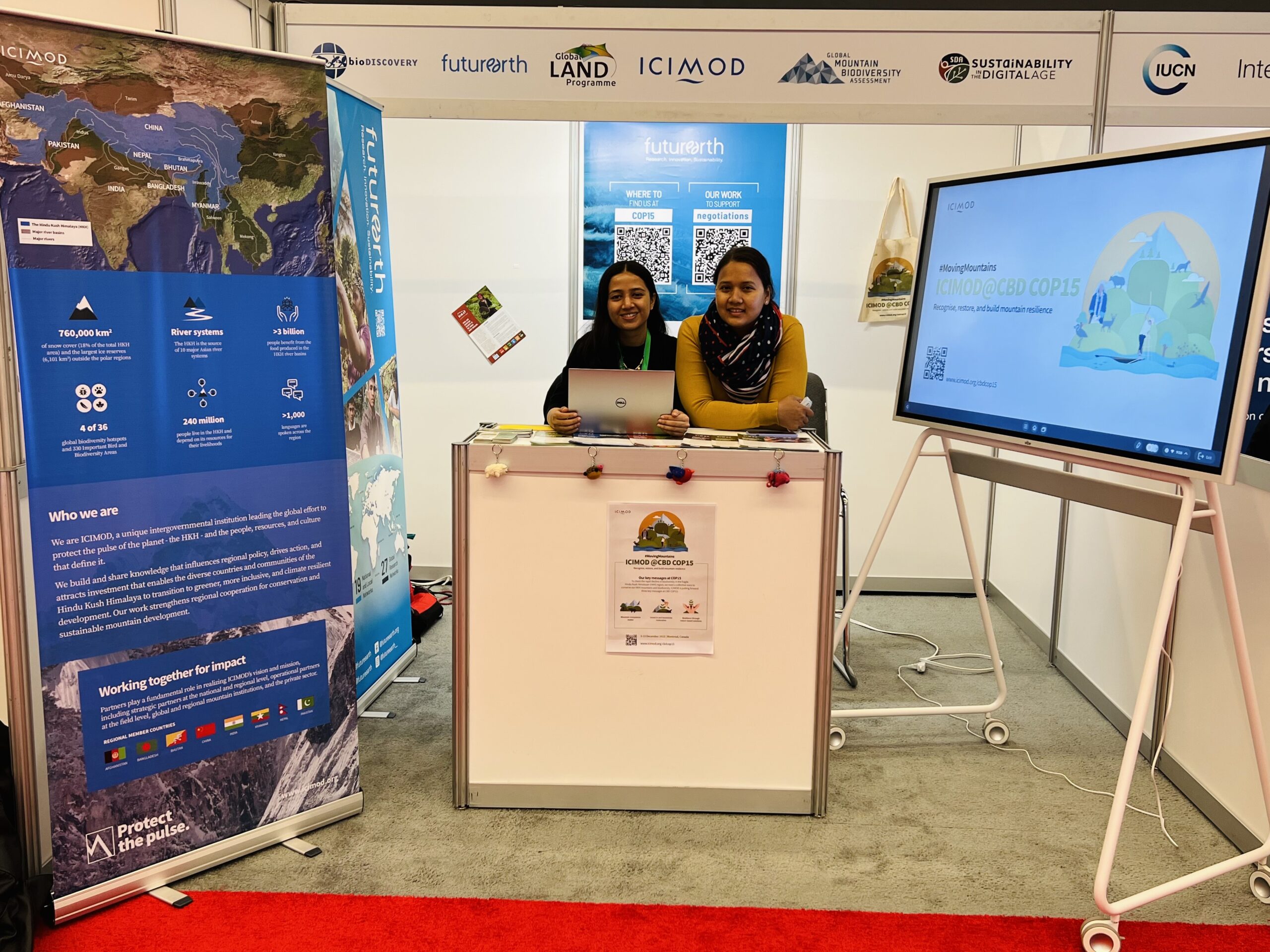Outcomes from COP15 & Future Earth Involvement
Nations Adopt Four Goals, 23 Targets for 2030 in Landmark UN Biodiversity Agreement
Parties to the Convention on Biological Diversity have adopted the long-awaited Kunming-Montreal Global Biodiversity Framework, as biodiversity declines at an unprecedented rate. Almost 200 nations signed onto the historic deal Monday at COP15 after two weeks of negotiations, and delays to the conference due to the pandemic. The framework, along with the Paris Agreement, provides a roadmap to halt and reverse biodiversity loss across the planet in the next 28 years..
The agreement includes four long-term goals for 2050 and 23 targets for 2030, which need to be acted on immediately.
Among the global targets:
- Protect 30% of the planet for biodiversity and ecosystem functions by 2030 (known as the 30×30 plan)
- Restore 30% of the planet’s degraded land and sea ecosystems by 2030
- Eliminate, phase out, or reform $500bn of environmentally damaging subsidies per year by 2030
- Reduce pesticide risks and nutrient leakage in half
- Cut global food waste in half and reduce overconsumption
The overarching global goals of the framework:
- Maintain, enhance, or restore the integrity, connectivity, and resilience of all ecosystems, including halting human-induced extinction and maintaining genetic diversity
- Sustainable use of biodiversity
- The benefits of resources from nature are shared fairly and equitably and Indigenous knowledge is protected
- Money and other resources for implementing the framework get to where they are needed
“Without such action, there will be a further acceleration in the global rate of species extinction, which is already at least tens to hundreds of times higher than it has averaged over the past 10 million years,” says the text of the framework.
Implementation of the framework will require responsibility and transparency by the parties, since it is not legally binding.
Eliane Ubalijoro, Global Hub Director at the Canada Hub of Future Earth said: “To halt and reverse biodiversity loss, we need to use all tools at our disposal. Of course this means policy and citizen action, but it also means calling on large corporations and financial investors to back sustainable supply chains and to be first movers on purchasing credits that cover a holistic combination of carbon sequestration, biodiversity conservation and support for sustainable livelihoods. It is exciting that we now have over 1,100 companies generating over 5 trillion USD asking governments to support them by adopting the needed regulations to ensure all private corporations work towards nature positive economies that bend the curve on biodiversity loss. COP15 opened up a door for new conversations that target innovative business-for-nature frameworks and collaborations to align climate and biodiversity goals.”
Davnah Urbach, Executive Director of Global Mountain Biodiversity Assessment, says: “If implemented in a just and equitable manner, in particular with regard to indigenous populations, the agreement reached in Montreal is a step forward towards the safeguard of biodiversity, also in mountains, and for halting ongoing losses of species and ecosystems worldwide. Whereas the global percentage of mountain area under nature protection already exceeds the newly set target, a closer look at individual countries, mountain systems, and mountain ranges shows that many areas of importance for the persistence of unique mountain species are not yet under sufficient protection. Whereas a global target sets the stage for enhanced international efforts towards safeguarding the nature on which we depend, it remains critical that countries work on protecting their biodiversity in mountains and beyond at relevant and pertinent scale. The Kunming-Montreal global biodiversity framework offers numerous entry points for a sustainable management of mountain ecosystems and biodiversity, with targets and indicators that can be scaled all the way to individual mountain ranges. Together with the secretariat of the Convention on Biological Diversity, scientific institutions and networks will play a key role in supporting mountain countries in the design of their implementation plans and in the adoption of these targets and indicators in the mountain context.”
Future Earth at COP15
Experts from Future Earth who contributed to actionable solutions aimed at supporting negotiations were involved throughout the conference at workshops, side events, and forums.
During the second week of COP15, three researchers, including David Obura from the Earth Commission, wrote a statement calling for the 2030 deadline not to be abandoned in the COP15 negotiations (read more here). More than 3000 researchers from 125 countries, including Future Earth experts, signed onto the statement.
Dr. Obura also read a high-level statement on behalf of Future Earth on Friday, 18 December. You can read it here.


Future Earth also had an exhibition booth where staff from our Canada Hub and affiliated organizations shared our biodiversity work. The video below includes interviews with delegates and others working to advance biodiversity conservation within Future Earth, including the importance of considering indigenous populations when making decisions about the environment, and now critical nature and biodiversity is to the successful implementation of climate solutions.
DATE
December 21, 2022AUTHOR
Future Earth Staff MemberSHARE WITH YOUR NETWORK
RELATED POSTS
Program Now Available for the Year’s Top Sustainability Science and Innovation Event in Finland
Apply for the 2024 Pathways Autumn School: Transformative Research for a Just World and a Habitable Planet
Future Earth Experts Contribute to “10 Must Knows” as a Guide to Preserving Biodiversity